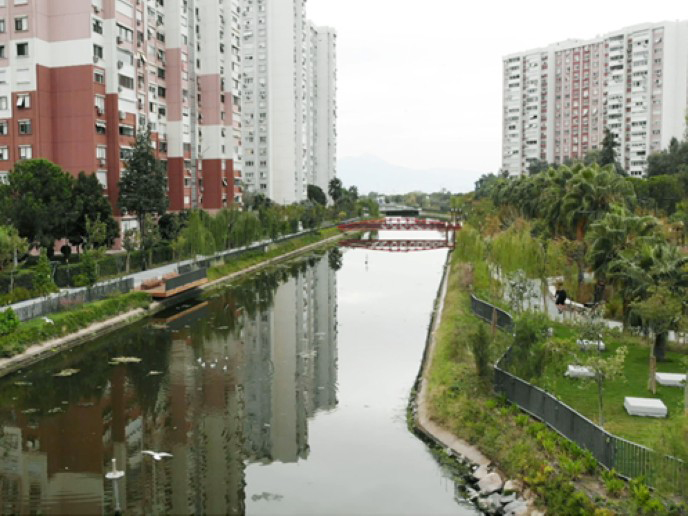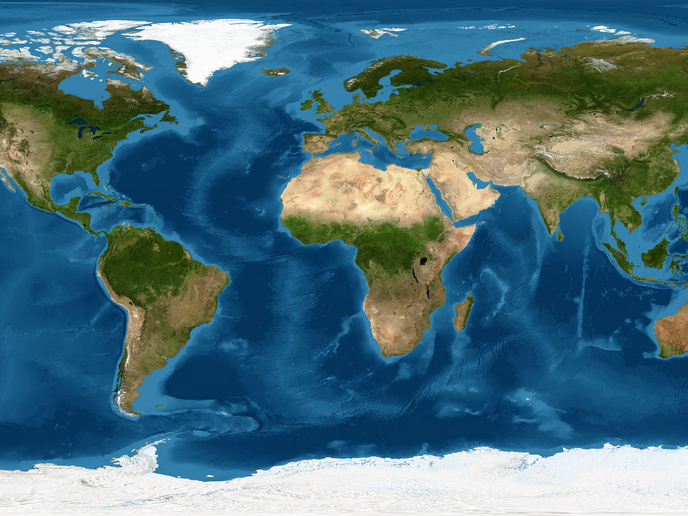Satellites provide detailed picture of aquatic ecosystems’ status
Lakes and coastal waters have a major impact on local ecology and human welfare in general, and provide ecosystem services in multiple and occasionally conflicting ways. The importance of understanding the state of these water bodies is acknowledged through several European policies, including the Bathing Water Directive (2006/7/EC) and the Water Framework Directive (WFD) (2000/60/EC). Water monitoring traditionally involves going out into the field for sample collection and then conducting tests in the laboratory. However, this approach is labour-intensive, costly and time-consuming. Furthermore, limited accessibility to sampling locations and thus sparse sampling frequency means this form of monitoring can fail to capture the spatial and temporal dynamics in water quality. By combining Earth Observation (EO) data with innovative in situ instruments and forecasts by models, the EU-funded EOMORES project ensures comprehensive monitoring of water quality in coastal and inland water bodies. “EOMORES’ fully automated commercial, reliable and sustainable services will support (inter)national and regional authorities responsible for monitoring, managing and reporting on water quality for the WFD, as well as private entities active in the field, such as dredging companies,” says project coordinator Annelies Hommersom.
Innovative technology
EOMORES developed user-relevant, sustainable commercial downstream services for operational inland and coastal water quality monitoring, reporting and forecasting. These are based on the improved methods for deriving water quality data from EO from the Sentinel-3, -2 and -1 satellites, which are part of the European Space Agency’s Copernicus Programme. According to Hommersom, a great deal of work has gone into further development of methods for deriving water quality maps from the Sentinel satellites (S2, S3). “EOMORES combines the advantages of these satellites, by using the daily available imagery from S3 with the high resolution from S2,” she comments. Researchers also built and tested the stand-alone ‘WISPstation’ in situ instrument for high-frequency water quality monitoring. Five of these new innovative instruments were stationed in European lakes, collecting high-frequency in situ water quality data automatically and requiring only minimal maintenance. In addition, scientists developed ecological models such as the AlgaeRadar for forecasting algae blooms. The strength of this model is its quick set-up and simulation time.
Better environmental management
The three components (satellite monitoring, in situ monitoring and modelling) can be flexibly combined, based on user needs. “Options include near real-time monitoring, long-term analysis for ecological purposes, and forecasts to provide early warnings. The EOMORES products and services were thoroughly validated in the field and are now available on an operational basis: they are presented in the Product and Service Portfolio,” explains Hommersom. By incorporating the feedback of a user board of water managers, the project made sure that the geospatial data and forecasts offered by EOMORES would be a valuable addition to water managers, giving them a better understanding of their local water systems and enabling them to take timely actions, ensuring healthy water bodies for EU citizens. “EOMORES, in collaboration with the CoastObs project, also released a White Paper, 'Satellite-assisted monitoring of water quality to support the implementation of the Water Framework Directive', thereby helping inform environmental policy decisions,” Hommersom concludes.
Keywords
EOMORES, Earth Observation (EO), ecosystem services, Water Framework Directive, Sentinel, WISPstation, WFD, AlgaeRadar, water monitoring, Bathing Water Directive







